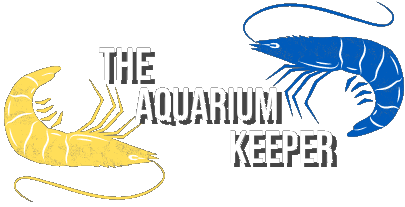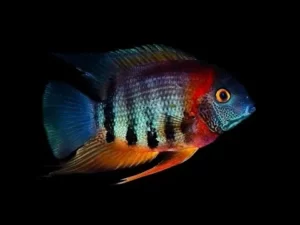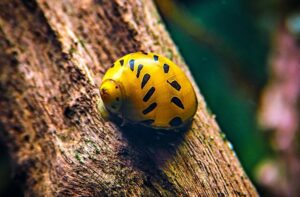
20 Interesting Fish That Burrow In Sand

Writer at The Aquarium Keeper
Seeing fish or other aquatic creatures dig up and burrow in the sand can be an amazing thing to witness. There can be a lot of reasons why aquatic species burrow in the sand, and fortunately for us, there are a bunch of species, that portray that behavior and can be kept in aquariums! In this article, I will introduce 20 different fish that burrow in the sand.
Why do Fish Burrow in Sand?
Before I begin the species list, it is important to understand, why fish burrow in sand. What makes fish portray this interesting behavior, that can seem funny to us, but to them means something? Here are the possible reasons, why fish burrow in the sand:
- Hiding behavior. Some species simply like to burrow themselves in the sand and hide. They feel more comfortable not being seen or bothered by fish or other aquatic creatures. There is a good chance, that you would see these species in your tank not very often.
- Curiosity. Some fish really like to bite, touch and move stuff. They might also burrow and dig the substrate up, simply because they can be curious or bored.
- Territorial behavior. Some fish might move around the substrate because they want to create their own territory, which they would guard and mark as their own.
- Breeding behavior. Certain fish species like to move around and, reshape the aquarium, and make it their own in order to create a perfect environment for breeding. In their mind, that is the right thing to do.
- Feeding behavior. Some fish or aquatic species like to hide in sand or their own crafted hiding spots, simply because they might be filter feeders, or it is easier for them to catch their prey.
These are the most common reasons, why most aquatic fish or other species burrow in sand. Continue reading, to find out every reason for the species that I am going to mention in this article.
Fish That Burrow in Sand
To begin our list, I would like to mention, that not every species mentioned on this list is actually a “fish”. Some creatures are invertebrates, but they are highly available and popular in the aquarium hobby, and that is why I decided to mention them.
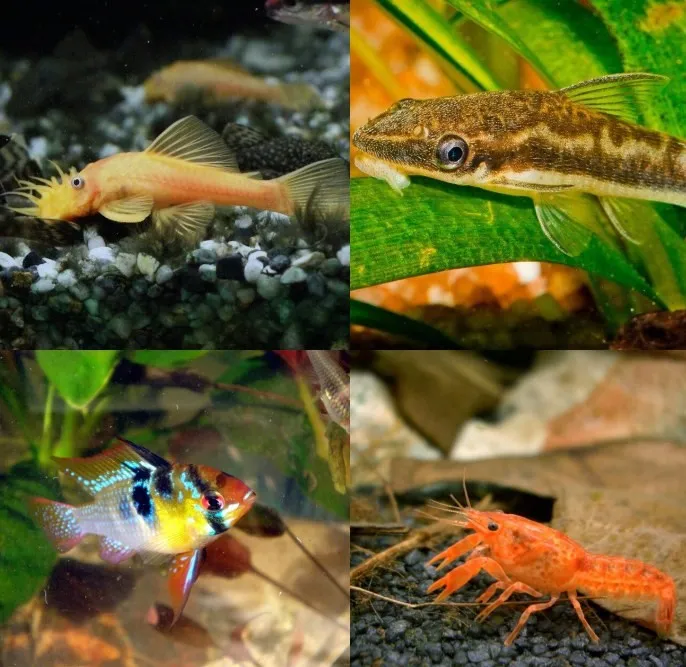
Kuhli Loach
The first fish on this list is the popular kuhli loach. It is a relatively common species of loach, that are available in most parts of the world.

When it comes to burrowing in the sand, kuhli loaches tend to hide inside the sand or gravel and rarely come out during day time. There is a good chance, that you would not see your kuhli loaches for some time when introducing them into your tank. Here is more information about these species:
- Scientific name: Pangio kuhlii
- Origin: South Asia (Malaysia, Indonesia, Thailand)
- Rarity: Common
- Price: Can cost from 5$ to 10$ per fish
- Care level: Easy
- Water Temperature: 24°C to 30°C (75°F to 86°F)
- pH: 5.5–6.5
- Minimum Tank Size: 20 gallons
- Diet: Omnivorous (pellets, leftover food, brine shrimp, bloodworms)
- Temperament: Peaceful
- Lifespan: Up to 10 years
- Size: up to 4 inches (10 cm)
In terms of appearance, kuhli loaches are snake-type creatures, that have yellow stripes going across their whole body. They are suitable for beginners but do better in groups, so be sure to get at least 4 when buying kuhli loaches.
Dojo Loach
Another loach on this list, that loves burrowing in the sand, is the dojo loach. These species can come in multiple colors (yellow, brown, white), and are also fairly common and available everywhere.
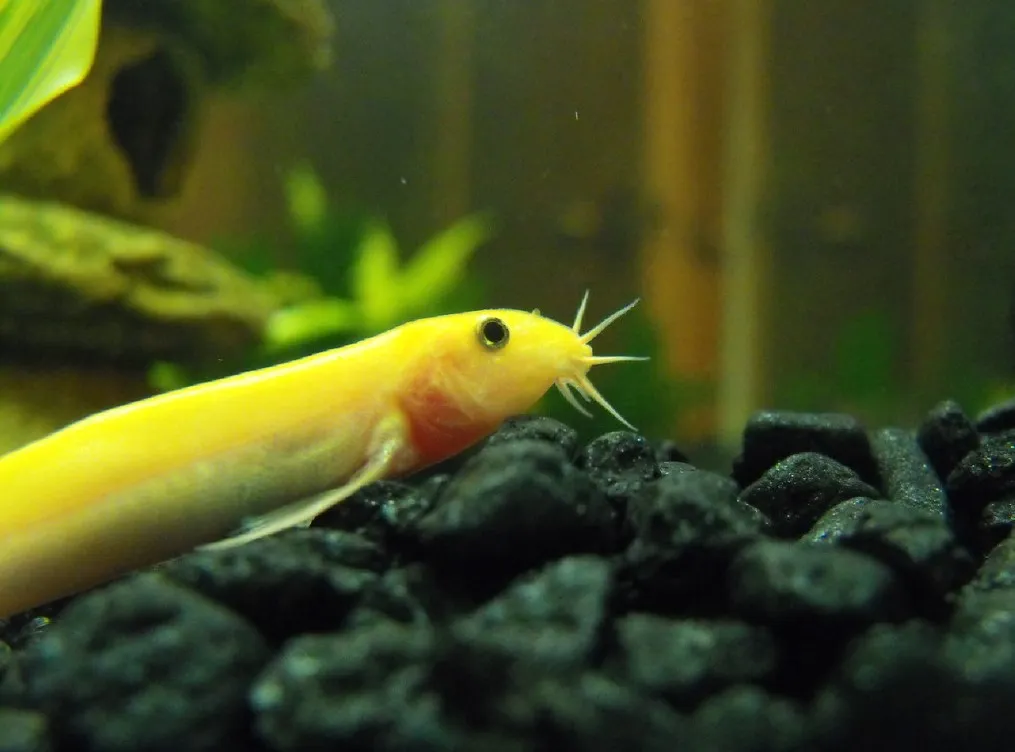
Dojo loaches act similarly to kuhli loaches when it comes to burrowing. They dig up sand and hide in it since they feel more safe. During the night, they occasionally venture out into the open space of the aquarium, since that is the time, that they are most active. Here is more information about dojo loaches:
- Scientific name: Misgurnus anguillicaudatus
- Origin: East Asia (China, Japan, Korea)
- Rarity: Common
- Price: Can cost from 5$ to 15$ per fish
- Care level: Easy
- Water Temperature: 18°C to 24°C (64°F to 75°F)
- pH: 6.5–7.5
- Minimum Tank Size: 20 gallons
- Diet: Omnivorous (frozen or live foods, such as brine shrimp, blood worms, and small insects)
- Temperament: Peaceful, but can sometimes be territorial
- Lifespan: Up to 10 years
- Size: up to 12 inches (30 cm)
Even though dojo loaches are known to be burrowing species, not every loach does that. Remember, that every aquatic creature is different, and dojo loaches can sometimes be unpredictable, some may not even burrow once while being kept in an aquarium.
Clown Loach
Moving on, another fish, that burrows in the sand, is the clown loach. These species are considered to be more suitable for intermediate fishkeepers, simply because they require more space due to their size and environmental requirements.
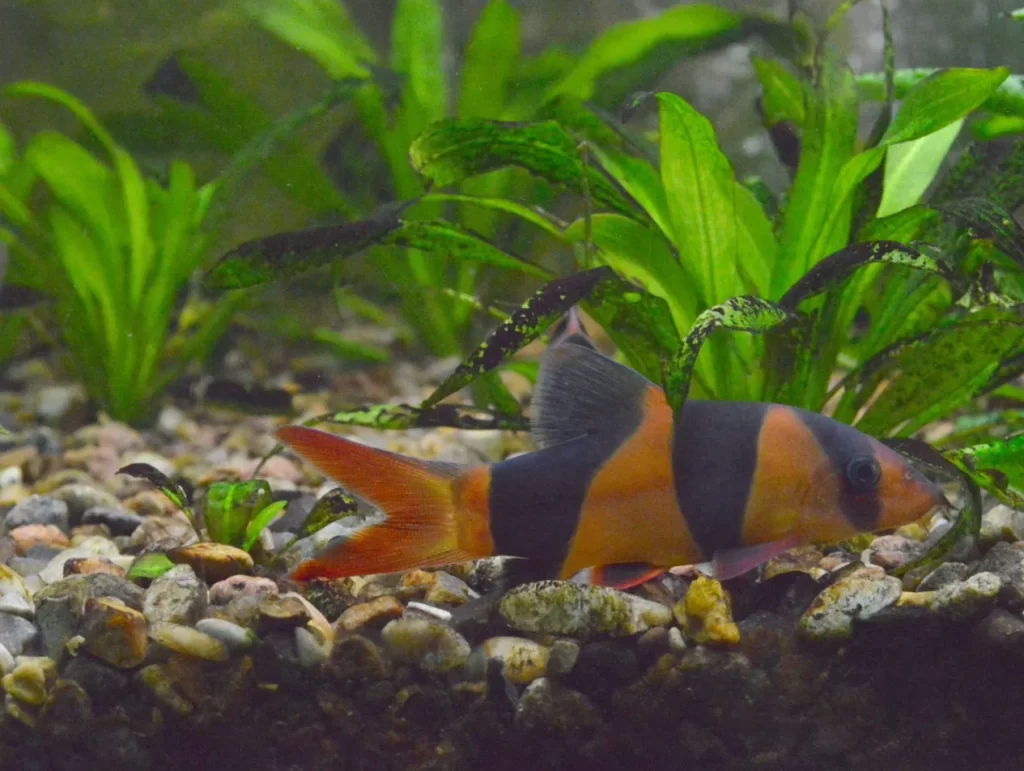
Clown loaches are notorious for not actually digging themselves in the sand like dojo or kuhli loaches, but creating very sneaky hiding spots all around the aquarium by moving around the substrate. Here is more information about clown loaches:
- Scientific name: Chromobotia macracanthus
- Origin: Southeast Asia (Indonesia, Borneo, Sumatra)
- Rarity: Common
- Price: Can cost from 5$ to 15$ per fish
- Care level: Intermediate
- Water Temperature: 25°C to 30°C (77°F to 86°F)
- pH: 6.0–7.5
- Minimum Tank Size: 100 gallons
- Diet: Omnivorous (pellets, leftover food, brine shrimp, bloodworms)
- Temperament: Peaceful, but can become territorial
- Lifespan: Up to 20 years
- Size: up to 16 inches (40 cm)
Clown loaches also love to burrow in the sand while eating. These species are bottom dwellers, and they usually stir up the substrate while looking for food. These species also like to live in groups of at least 6, so it is best to keep this fish if you have a bigger tank.
Hillstream Loach
The hillstream loach is another excellent type of fish when it comes to burrowing in sand. They love to attach to things with their lips and clean algae off of glass, rocks, or other decorations.

Hillstream loaches enjoy burrowing themselves in the sand, and the main reason they do it is because it provides them with cover and a place to hide. They don’t usually completely burrow their body in the sand, just a little bit, so that they would blend in with the environment. Here is more information about hillstream loaches:
- Scientific name: Sewellia lineolata
- Origin: Southeast Asia (Laos, Thailand)
- Rarity: Common
- Price: Can cost from 10$ to 20$ per fish
- Care level: Easy
- Water Temperature: 20°C to 25°C (68°F to 77°F)
- pH: 7.0–7.5
- Minimum Tank Size: 25 gallons
- Diet: Omnivorous (pellets, leftover food, brine shrimp, bloodworms, algae, plant matter)
- Temperament: Peaceful
- Lifespan: Up to 7 years
- Size: up to 3 inches (8 cm)
There are a lot of different hillstream loaches available all around the world. Some are rare and others can have interesting patterns, which would make them more expensive.
Bristlenose Pleco
A similar species to the hillstream loach is the bristlenose pleco. This fish is hugely popular and is often included in freshwater community aquariums. Similar to hillstream loaches, bristlenose plecos also come in many different colors.

Bristlenose plecos also have similar burrowing behavior to hillstream loaches. They tend to stir up the sand and cover themselves partially, in order to provide some sort of coverage. Here is more information about bristlenose plecos:
- Scientific name: Ancitrus spp.
- Origin: South America (Amazon River)
- Rarity: Common
- Price: Can cost from 5$ to 20$ per fish
- Care level: Easy
- Water Temperature: 21°C to 27°C (70°F to 80°F)
- pH: 6.5–7.5
- Minimum Tank Size: 20 gallons
- Diet: Herbivorous (algae, plant matter, algae waffers)
- Temperament: Peaceful
- Lifespan: Up to 10 years
- Size: up to 6 inches (15 cm)
Otocinclus
Moving on, another fish that like to burrow in the sand is the widely popular otocinclus. These species act and sort of look similar to bristlenose plecos, but are smaller and can sometimes be shyer.

There are a few types of different otocinclus species, some have stripes or dots on their body. Otocinclus love to also partially burrow themselves in the sand, it is a behavior, that helps the fish to hide from potential danger. Here is more information about otocinclus:
- Scientific name: Otocinclus spp.
- Origin: South America (Amazon River)
- Rarity: Common
- Price: Can cost from 2$ to 5$ per fish
- Care level: Easy
- Water Temperature: 22°C to 28°C (72°F to 82°F)
- pH: 6.5–7.5
- Minimum Tank Size: 10 gallons
- Diet: Herbivorous (algae, plant matter, algae wafers)
- Temperament: Peaceful
- Lifespan: Up to 5 years
- Size: up to 2 inches (5 cm)
These species are also excellent at cleaning up algae. Since otocinclus are herbivorous fish, they only eat plant matter, algae, and plant-based fish food. If you have an algae problem, be sure to introduce a group of otocinclus in your tank.
Asian Stone Catfish
Another bottom dweller on this list is the asian stone catfish. These species are not that widely popular amongst fishkeepers, but they are being slowly introduced in more and more places.

Asian stone catfish appearance is truly unique, the body is covered in random patches of grey, yellow, brown, and black colors, making the appearance of the fish resemble a random stone. These species also enjoy burrowing in the sand, and usually partially cover themselves with it, making it even more hard to spot. Here is more information about these species:
- Scientific name: Hara jerdoni
- Origin: Southeast Asia (Sri Lanka, India, Bangladesh)
- Rarity: Uncommon
- Price: Can cost from 10$ to 15$ per fish
- Care level: Intermediate
- Water Temperature: 22°C to 26°C (72°F to 79°F)
- pH: 6.5–7.5
- Minimum Tank Size: 20 gallons
- Diet: Omnivorous (pellets, leftover food, brine shrimp, bloodworms)
- Temperament: Peaceful
- Lifespan: Up to 7 years
- Size: up to 2 inches (5 cm)
Asian stone catfish also stir up the bottom of the tank while looking for food. These bottom dwellers have small mustaches near their lips, that help detect their next meal. They are excellent at cleaning the bottom of the tank.
Reedfish
Moving on, another snake-type species on this list is the reedfish. This long and basic-looking fish is also known as ropefish because the body of the creature can resemble a basic rope.

The reedfish is notorious for completely burrowing itself in the substrate, and the reason for that is because this fish is mainly carnivorous, it can eat small crustaceans or fish. By burrowing in the sand completely, it is a way for these species to hunt for food. Here is more information about reedfish:
- Scientific name: Erpetoichthys calabaricus
- Origin: Africa (Niger Delta)
- Rarity: Common
- Price: Can cost from 10$ to 20$ per fish
- Care level: Intermediate
- Water Temperature: 24°C to 28°C (75°F to 82°F)
- pH: 6.5–7.5
- Minimum Tank Size: 55 gallons
- Diet: Carnivorous (bloodworms, shrimp, small fish, insects)
- Temperament: Peaceful, but can eat smaller tankmates
- Lifespan: Up to 15 years
- Size: up to 18 inches (45 cm)
Reedfish is also one of the biggest species on this list in terms of size and tank requirements. Be sure to have a big enough tank for these species, because you can get the most out of reedfish if you provide the right tank conditions.
German Ram
Moving on, the first cichlid species on this list is the german ram. It is a peaceful community fish, that does not grow too large and portrays very interesting colors.

- Scientific name: Mikrogeophagus ramirezi
- Origin: Originates from South America, but are mainly captively bred
- Rarity: Common
- Price: Can cost from 10$ to about 15$
- Care level: Easy
- Water Temperature: 28 to 30 °C (82 to 86 °F)
- pH: 6.0–7.5
- Minimum Tank Size: 20 gallons for a pair
- Diet: Omnivorous (can eat bloodworms, fish flakes, pellets, and plant matter)
- Temperament: Peaceful, but can be aggressive while breeding
- Lifespan: 2-4 years
- Size: up to 2 inches (5 cm)
Since german rams love to burrow sand and dig up little holes everywhere, be sure to get plants, that don’t need to be planted in the substrate to thrive. Column-feeding aquarium plants are excellent for conditions like this, since they can be attached to decorations, and don’t need to rely on substrate for nutrients.
Bolivian Ram
There are a lot of types of ram cichlids, but the bolivian ram also had to be mentioned, because it is considered a different species from most rams. The bolivian ram is also known for burrowing in the sand, digging up holes.

Bolivian rams also burrow in the sand for the same reason as german rams, and it is breeding. During that period, they can become territorial and aggressive towards other tank mates. Here is more information about bolivian rams:
- Scientific name: Mikrogeophagus altispinosus
- Origin: South America (Amazon River, Brazil and Bolivia)
- Rarity: Common
- Price: Can cost from 10$ to about 15$
- Care level: Easy
- Water Temperature: 22 to 28 °C (72 to 82 °F)
- pH: 6.0–7.5
- Minimum Tank Size: 30 gallons for a pair
- Diet: omnivorous (can eat bloodworms, plant matter, fish food, pellets, brine shrimp)
- Temperament: Peaceful, but can become aggressive while breeding
- Lifespan: 4-6 years
- Size: up to 3 inches (7.62 cm)
These species are slightly larger than german rams, which means, that they need more space to thrive. Be sure to include lots of hiding places in your tank, so that different ram pairs could have their own territories.
Oscar Fish
Moving on, another type of cichlid, that is widely popular in this hobby and enjoys digging up the sand in the aquarium is the oscar fish. They are larger, more territorial, and can be aggressive, so it is best to keep them in their own separate tanks.

Oscar fish are unique species, that are extremely gorgeous. They come in a few different body colors, but all of them have their trademark orange spottings all around the body. Similar to other cichlids, the oscar fish burrow in the sand in order to create breeding spots. Here is more information about oscar fish:
- Scientific name: Astronotus ocellatus
- Origin: South America (Amazon River)
- Rarity: Common
- Price: Can cost from 10$ to 50$ per fish
- Care level: Intermediate
- Water Temperature: 24°C to 28°C (75°F to 82°F)
- pH: 6.0–7.5
- Minimum Tank Size: 75 gallons
- Diet: Omnivorous (pellets, feeder fish, mealworms, shrimp)
- Temperament: Can be aggressive and territorial
- Lifespan: Up to 15 years
- Size: up to 14 inches (35 cm)
Oscar fish are also highly intellectual. They often recognize their owners and learn to understand, when it is feeding time. These species can develop a unique character, which makes them a favorite amongst fish keepers.
You might also like to read: Do Oscar Fish Have Sharp Teeth?
Goldfish
Goldfish is probably the most common and popular type of fish on this list. It is well known, that there are a lot of different goldfish types, but all of them enjoy burrowing through sand.

Goldfish are very curious species, they like to explore their tank and interact with their surroundings. They also have a big appetite, and like to try and bite everything, because of this, they often stir up the aquarium sand, and even uproot aquarium plants, these species sometimes make a mess! Here is more information about the basic fancy goldfish:
- Scientific name: Carassius auratus
- Origin: Originates from the classic koi carp, which comes from China
- Rarity: Common
- Price: Can cost from 1$ to 5$ per fish
- Care level: Easy
- Water Temperature: 18°C to 22°C (64°F to 72°F)
- pH: 6.5–7.5
- Minimum Tank Size: 20 gallons
- Diet: Omnivorous (pellets, brine shrimp, flakes, bloodworms)
- Temperament: Peaceful
- Lifespan: Up to 20 years
- Size: up to 8 inches (20 cm)
If you want goldfish because they burrow in the sand, be sure to actually get plants, that don’t need to be planted, otherwise, you will have a lot of back and forth with trying to keep your plants in the substrate.
Red Congo Pufferfish
Moving on, one of the more interesting species on this list is the red congo pufferfish. This fish literally looks like a swimming potato!

Red congo pufferfish is covered in dark red color, while also having small white markings across the whole body. These species burrow in the sand, and usually cover themselves almost fully, while only the eyes are sticking out of the sand. These species hunt by hiding in the sand and then ambushing for their next meal. Here is more information about these species:
- Scientific name: Tetraodon miurus
- Origin: Central Africa (Congo River)
- Rarity: Uncommon
- Price: Can cost from 50$ to 100$ per fish
- Care level: Intermediate
- Water Temperature: 24°C to 28°C (75°F to 82°F)
- pH: 6.0–7.5
- Minimum Tank Size: 75 gallons
- Diet: Carnivorous (feeder fish, mealworms, shrimp)
- Temperament: Aggressive
- Lifespan: Up to 8 years
- Size: up to 8 inches (20 cm)
One thing you should keep in mind when considering these species is that they are not really suitable for community tanks. Congo pufferfish species usually show signs of aggression and can be very territorial, so they are mainly kept in species-only aquariums.
Geophagus
Another cichlid species, that look absolutely amazing, and also stirs up and burrows through the substrate, is geophagous. There are a lot of types of these fish, but most of them portray the same behavior.

Geophagus usually stirs up and starts digging substrate, when they are preparing to breed, or when introduced to an aquarium. They like to arrange the substrate, in order to make and mark their own territory. Here is more information about these species:
- Scientific name: Geophagus spp.
- Origin: South America (Amazon River)
- Rarity: Common
- Price: Can cost from 10$ to 30$ per fish
- Care level: Intermediate
- Water Temperature: 24°C to 28°C (75°F to 82°F)
- pH: 6.5–7.5
- Minimum Tank Size: 75 gallons
- Diet: Omnivorous (pellets, leftover food, brine shrimp, bloodworms, plant matter)
- Temperament: Peaceful, but can show aggressive behavior
- Lifespan: Up to 12 years
- Size: up to 12 inches (30 cm)
Most geophagus fish can reach relatively large sizes, so be sure to have a large aquarium setup, if you consider getting this beautiful cichlid fish.
Bumblebee Goby
Moving on, gobies are also known to like to burrow in the sand, and most of them are actually saltwater gobies. Nevertheless, there is a freshwater goby, that also portrays this kind of behavior, and it is called the bumblebee goby.

On occasion, these species like to dig up sand and burrow in it. These species are territorial fish, and by burrowing and digging, they mark their own territories. Here is more information about bumblebee gobies:
- Scientific name: Brachygobius spp.
- Origin: Southeast Asia (Malaysia, Indonesia, Thailand)
- Rarity: Common
- Price: Can cost from 5$ to 15$ per fish
- Care level: Intermediate
- Water Temperature: 24°C to 28°C (75°F to 82°F)
- pH: 6.0–7.5
- Minimum Tank Size: 20 gallons
- Diet: Carnivorous (brine shrimp, bloodworms, small crustaceans)
- Temperament: Peaceful, but can be territorial
- Lifespan: Up to 5 years
- Size: up to 2 inches (5 cm)
Bumblebee gobies don’t grow very large, so it is a perfect fish for medium-sized community aquariums. Be sure to get some proper food for these species, since they are mainly carnivores, and need a protein-based diet to live happily.
Malaysian Trumpet Snail
There are a lot of different aquarium snail types, but not all of them burrow in the sand. The first snail on this list, which loves to burrow in the sand, is the common malaysian trumpet snail. Lots of fishkeepers don’t like this snail, since it usually appears in an aquarium unwanted.
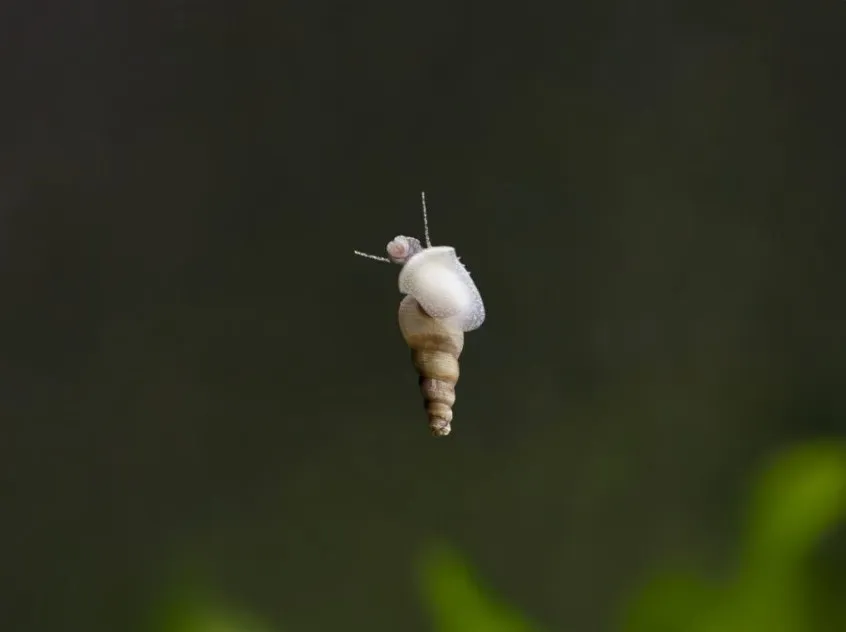
Malaysian trumpet snails often hide in the sand during the day, and come out at night. If you want to see this behavior, try to look at your aquarium with malaysian trumpet snails during dark hours, and you will see a bunch of them being active in your tank. Here is more information about these species:
- Scientific name: Melanoides tuberculata
- Origin: Southeast Asia (Malaysia, Indonesia)
- Rarity: Common
- Price: Can cost from 0.25$ to 1$
- Care level: Easy
- Water Temperature: 20–28 °C (68–82 °F)
- pH: 7.0–8.0
- Minimum Tank Size: 5 gallons
- Diet: Omnivorous (leftover fish food, algae, decaying plants, or tank mates)
- Temperament: Peaceful
- Lifespan: Up to 2 years
- Size: up to 1 inch (2.5 cm)
Malaysian snails often hitchhike into aquariums through newly introduced plants or decorations. These species breed very quickly, so if you want to keep them in your tank, be sure to occasionally manage their population, so that they don’t overtake your aquarium.
Prambanan Snail
Another snail on this list is the prambanan snail. These species are not that common in the aquarium hobby and are only available through a few online retailers.

Prambanan snails have multiple horns on their spiral shell. They are known to occasionally burrow themselves deep in the sand but are more active and out exploring than malaysian trumpet snails. Here is more information about prambanan snails:
- Scientific name: Thiara winteri
- Origin: Indo-Pacific region
- Rarity: Rare
- Price: Can cost from 3$ to 7$ per snail
- Care level: Easy
- Water Temperature: 22–28 °C (72–82 °F)
- pH: 7.0–8.0
- Minimum Tank Size: 5 gallons
- Diet: Omnivorous (can eat blanched vegetables, algae, blood worms, leftover food)
- Temperament: Peaceful
- Lifespan: Up to 2 years
- Size: up to 1.5 inches (4 cm)
These species get their “prambanan” name, because of their unique shell appearance. The shell of this snail can resemble a prambanan temple, which also has a lot of sharp edges, and is visually similar.
Pagodula Snail
Another rare snail on this list is the pagodula snail. These species also have thorns on their shell, which is usually dark brown. There are very unique and are not widely available right now.

Pagodula snails often stir up the substrate and partially burrow when looking for food. They are known to be active and curious snails. Here is more information about pagodula snails:
- Scientific name: Brotia pagodula
- Origin: Southeast Asia (Thailand, Malaysia, Indonesia)
- Rarity: Rare
- Price: Can cost from 5$ to 15$ per snail
- Care level: Easy
- Water Temperature: 22–28 °C (72–82 °F)
- pH: 7.0 – 8.0
- Minimum Tank Size: 5 gallons
- Diet: Omnivorous (can eat algae, decaying plants, fish food, blanched vegetables)
- Temperament: Peaceful
- Lifespan: Up to 2 years
- Size: up to 1.5 inches (4 cm)
These species get their name “pagoda” or “pagodula” because of their shell resemblance to the pagoda architectural style. These species can be somewhat expensive, and the main reason is that they are not widely known, and there are not many of them available for purchase right now.
Vampire Shrimp
Moving on, the vampire shrimp also love to burrow in the sand. These species can come in different colors, some are grayish, and whitish, while there are vampire shrimp, that are deep blue in color. Most types of aquarium shrimp don’t burrow in the sand, which makes the vampire shrimp more special.
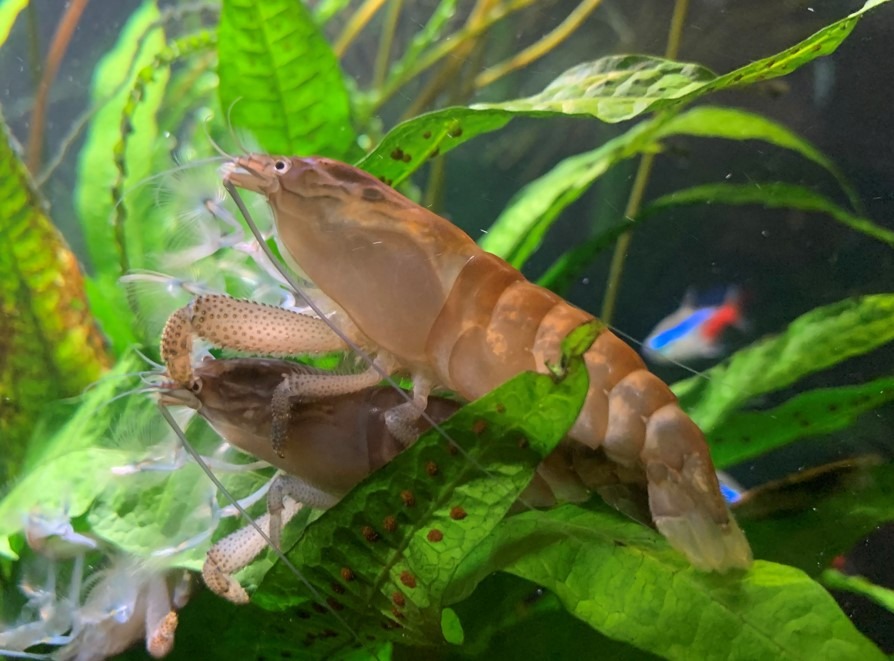
Vampire shrimp are filter feeders and often love to burrow in the sand, dig up small caves under decorations and stay there. These species don’t need to move a lot, since they feed from small particles in the water. Here is more information about vampire shrimp:
- Scientific name: Atya gabonensis
- Origin: West Africa (Gabon, Congo River)
- Rarity: Common
- Price: Can cost from 10$ to 30$ per fish
- Care level: Intermediate
- Water Temperature: 24°C to 28°C (75°F to 82°F)
- pH: 6.0–7.5
- Minimum Tank Size: 20 gallons
- Diet: Filter feeders, but can eat sinking pellets, blanched vegetables, algae, plant matter
- Temperament: Peaceful
- Lifespan: Up to 3 years
- Size: up to 4 inches (10 cm)
Even though vampire shrimp can often seem, that they don’t need food in their little caves, be sure to try and feed these species, since additional meals can help get them to get certain nutrients to successfully molt and live a happy life.
Dwarf Crayfish
The last species on this list is the dwarf crayfish. This crustacean can also come in a few different colors, which makes it a very popular pick among fishkeepers.

The dwarf crayfish is generally a peaceful creature, that loves to explore its surroundings and burrow in the sand often, mainly because of hiding purposes. They might be sometimes territorial if the tank conditions are not excellent. Here is more information about these species:
- Scientific name: Cambarellus
- Origin: North and Central America (United States, Mexico)
- Rarity: Common
- Price: Can cost from 5$ to 20$ per fish
- Care level: Easy
- Water Temperature: 20°C to 25°C (68°F to 77°F)
- pH: 6.5–7.5
- Minimum Tank Size: 10 gallons
- Diet: Omnivorous (pellets, leftover food, bloodworms, detritus)
- Temperament: Peaceful, but can be territorial
- Lifespan: Up to 2 years
- Size: up to 2 inches (5 cm)
If your dwarf crayfish seems to be hiding a lot, this might indicate that it is under stress. These species simply don’t enjoy being stressed out, and would rather seek refuge in plants, hiding spots, or even partially burrowing in the sand.
Frequently Asked Questions
Is Gravel a Good Substrate For Fish That Burrow?
Gravel would not be an ideal substrate, for species, that portray strong burrowing behavior. It would be hard for certain fish to dig, and they might even injure themselves in some instances.
Why is my Fish Digging in The Rocks?
There can be multiple reasons, why your fish is digging in the rocks. It depends on the fish, some species are curious and are looking for food, while others tend to move around rocks because they are making their own territory and breeding spots.
Writer's Thoughts
Sand-burrowing fish are truly amazing species, and it is so much fun to observe this interesting behavior. Make sure to choose the right species, that fits your aquarium setup, and enjoy seeing them interact with their environment!
If you enjoyed reading our article, please feel free to share it with your friends by clicking the social media buttons below:
